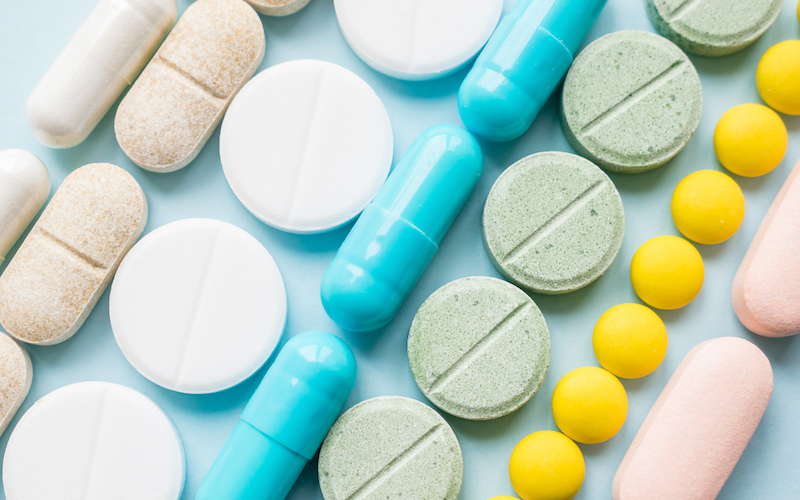
FDA clarifies its generic drug approval process in an effort to encourage market competition.
Toxoplasmosis damages the brain, eyes, and other organs, but the list price for the treatment is $750 per tablet. The cost of this medication, though, could soon decline because the U.S. Food and Drug Administration (FDA) approved the first generic version of the drug—thanks to the agency’s new Drug Competition Action Plan (DCAP).
FDA has credited DCAP for encouraging drug manufacturers to develop generic versions of brand name drugs. The plan was designed to create market competition and reduce drug costs. But the pharmaceutical industry has needed additional guidance to navigate the generic drug approval process.
In an effort to clarify DCAP and the generic approval pathways, FDA released an industry guidance last month. The guidance detailed the incentives for drug manufacturers to develop generic versions of drugs without market competition. The agency also updated its list of brand drugs that are not patent protected and do not face competition. FDA explained that these efforts were designed to increase agency transparency and make the generic drug approval process more efficient.
This recent agency guidance came three years after FDA announced an earlier action plan and Congress amended the Federal Food, Drug, and Cosmetic Act to create a new generic approval pathway. Since this amendment in 2017, FDA has continuously provided updated resources in an attempt to encourage the approval of less expensive generic medications.
The agency stated that its goal is to “remove barriers to generic drug development and market entry in an effort to spur competition so that consumers can get access to the medicines they need at affordable prices.”
The newly released guidance clarified the agency’s generic approval process. According to the guidance, a generic drug applicant can now request to be designated as a competitive generic therapy (CGT). FDA will label a drug as a CGT when the only competition on the market is the brand drug and the brand version does not have a current patent.
Once a drug has been labeled as a CGT, the product will receive 180 days of marketing exclusivity. During this six-month period, FDA cannot approve another form of the same drug. This market exclusivity gives the drug manufacturer time to profit from the treatment without any competitor generic products on the market.
FDA also has discretion to expedite the development and review of a product designated as a CGT. If the agency accelerates the process, FDA can participate in the drug manufacturer’s product development and pre-submission meetings. These meetings give drug manufacturers the opportunity to discuss their concerns and explain the content of their drug applications to the agency before submitting to a formal review. FDA suggested that the expedited development could help a manufacturer get its drug to market faster than it otherwise could under the traditional approval process.
In its guidance, FDA explained that market exclusivity and expedited review were created to encourage manufacturers to invest in generic therapies. The agency recognizes that drug manufacturers may be uninterested in developing generic forms of drugs that treat small patient populations or are complex and time consuming to create. Even though some generic drugs may not be very profitable for manufacturers, the public needs these generic products. FDA explained that more generics will ensure that patients have greater access to their medications at affordable prices.
In a FDA report published in December, the agency found that drug prices continued to decline as more generics entered the market. When there was one brand name and one generic version on the market, the manufacturer price for the generic version was on average 39 percent less than the manufacturer price for the brand drug. The average manufacturer price of generics continued to decrease with more generic versions of the drug available on the market, according to FDA’s report.
To help drug manufacturers determine what types of generic medications to develop, FDA has also updated its list of brand name drugs that no longer have market exclusivity or patent protections and do not have generic competition. The list of drugs that are currently unprotected from generic competition spans nearly ten pages. FDA intended for this list to “improve transparency” and encourage development of generic forms of drugs that do not have market competition.
Although FDA has supported generic competition, scholars have questioned whether the quality of generic drugs is always equivalent to the quality of the brand version. For example, a 2017 study reviewed blood pressure medications and found that patients who took the generic drugs experienced more side effects than those who took the brand version. The authors of that study suggested that generic drug manufacturers need greater surveillance to ensure proper quality control.
Niteesh Choudhry, a physician and professor at Harvard Medical School, reviewed the study and has suggested that differences in inactive ingredients may cause some patients to experience side effects after taking generics that they may not feel when they are on the brand name drug.
Although there may be slight differences in chemical compositions between generics and name-brand medications, Choudhry still recommends patients try generic drugs first because the high cost of brand medications can lead patients to skip doses. He recognizes that to control drug spending and keep medications affordable for the general public, generic drugs need to be available.
Even though scholars have questioned the level of effectiveness of some generic therapies, FDA has maintained that increasing drug competition through the development of generics is a “top priority” for the agency and the U.S. Department of Health and Human Services (HHS).
Alex Azar, the Secretary of HHS, has acknowledged that generic competitors are driving down drug prices. He praised FDA’s efforts to review generic treatments, stating that “the most obvious element of a more competitive pharmaceutical marketplace is simply more options for patients, especially generic options.”



